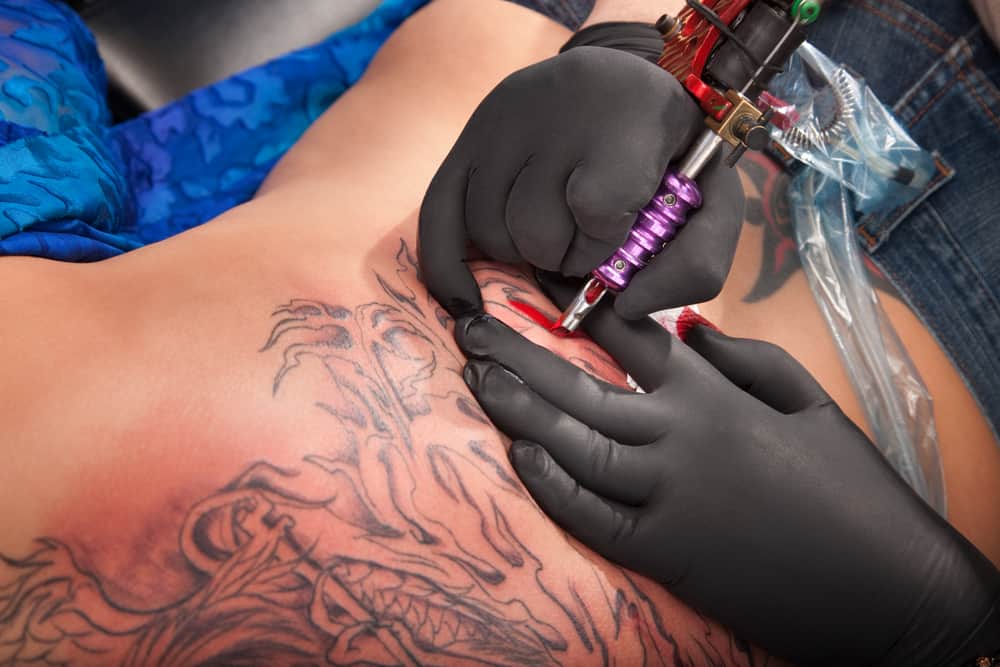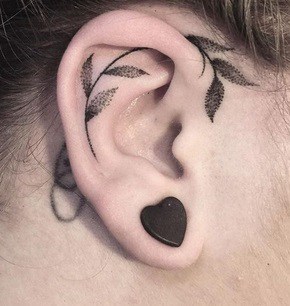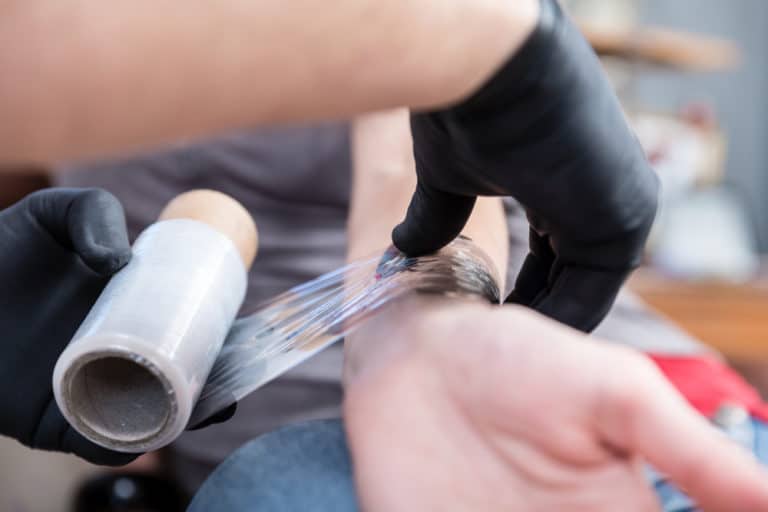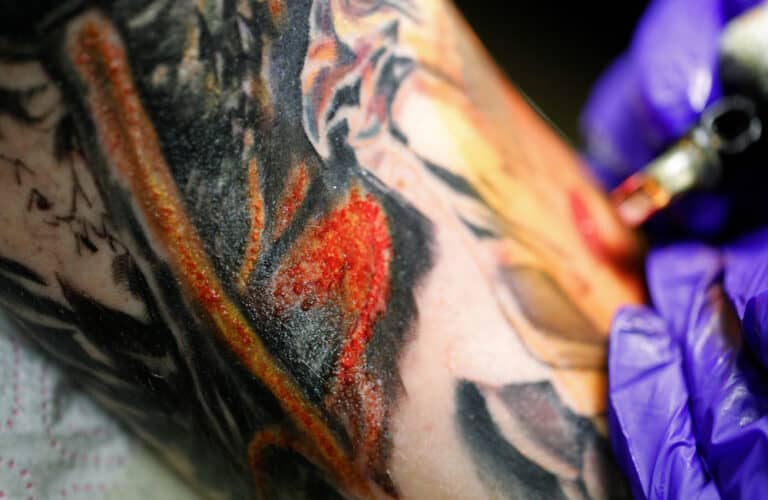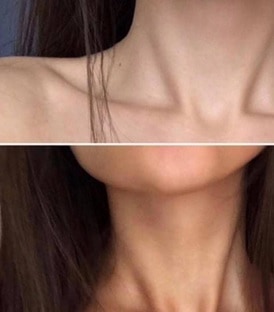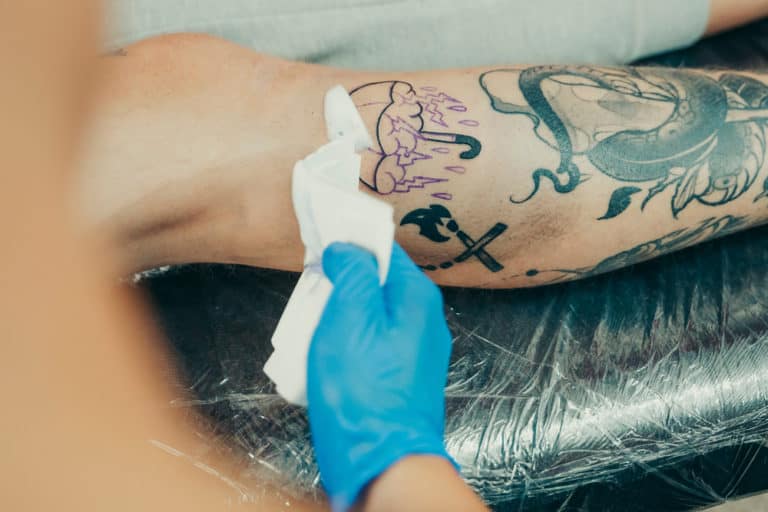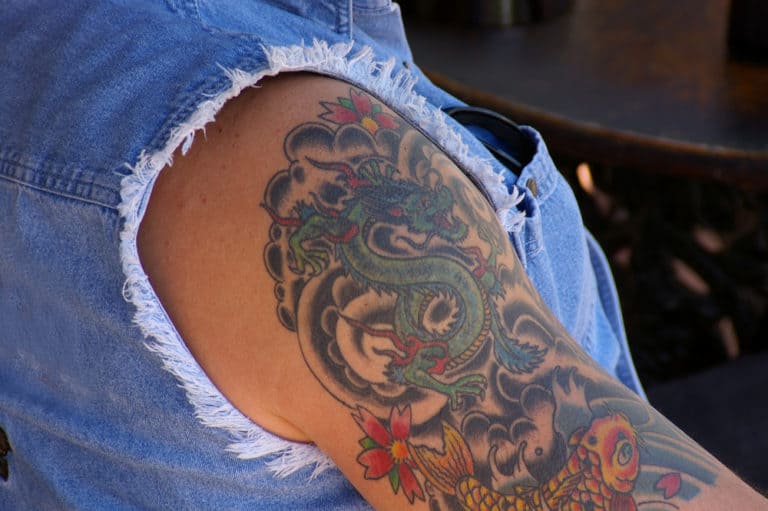Is It Normal For New Tattoos To Bruise?
Tattoos are amazing works of art that you get to keep on your body forever. Whether you’ve put a lot of thought into the design you want or getting a fun and silly tattoo, the appearance and healing of your tattoo are some of the most important parts of the process. But what happens when you notice bruising around your new ink?
Tattoos cause trauma to the skin that can result in bruising. If the bruising is severe, it may be caused by other factors like placement, your tattooist, how prone you are to bruising, medications, or it may even be a symptom of infection. Tattoo blowout is also sometimes mistaken for bruising.
So, if your new tattoo is starting to bruise, you may not need to worry just yet. There are several reasons that your tattoo may be bruising. You may be able to reduce the severity by using a few easy tips. So if you want your tattoo to heal properly, our guide will fill you in on all you need to know about tattoos and bruising.
Is Bruising Normal When You Get A New Tattoo?
Once you’ve gotten some fresh ink, one of the most exciting parts of the process is watching it heal and form into a work of art.
Before you’re able to see the result of your tattoo, though, you’ll have to wait for it to scab, peel, and heal completely. Although you may expect the scabbing, noticing bruising under your new tattoo can be concerning.
Bruising doesn’t necessarily have to be a cause for concern, though. While it doesn’t always happen, it’s not rare for a tattoo to bruise when it’s fresh.
This is because tattoos cause trauma to the skin. After trauma, it’s completely normal to experience bruising. For most tattoos, this bruising doesn’t affect the outcome of your tattoo and can be left alone to heal.
Tattoos cause trauma to the skin because tattoo guns use a needle or group of needles to puncture the skin several times a minute repeatedly. Each time these needles pierce the skin, they are also piercing small blood vessels underneath the skin’s surface.
Once these blood vessels are pierced, they begin to bleed. This is why your tattoo artist will generally be wiping the blood away during the tattooing process. Once the bleeding subsides, you will start to see scabbing, but the bleeding may sometimes continue underneath the skin’s surface.
Reasons For Heavier Bruising After Getting A New Tattoo
Bruising can be light and yellow but can also be dark blue or black and appear much heavier. This heavy bruising can be caused by several factors, including placement, the skill and technique of your artist, how prone you are to bruising, certain medications, or even infection.
Placement Of Your Tattoo
Bruising is more common in some parts of the body, particularly the lower extremities. This is because gravity forces blood to pool lower areas in the body, meaning that the blood has less of a chance to disperse upwards. Pooling is more likely to cause bruises and swelling in areas like the feet and ankles.
Compared to spots on the body that are made up of more fat and flesh, sections with much thinner skin appear to bruise more. This is likely because the areas are considerably more sensitive with much less cushioning.
Because of the delicateness and thinness of the skin, many persons with tattoos on their inner bicep and wrist areas have bruising. Swelling around your tattoo is also typical in places like this.
Skill And Technique Of Your Tattoo Artist
A tattooist with several years of expertise will have a more refined and polished technique than artists with less experience. They should know how to correctly set their tattoo machine to avoid causing unwanted skin injury.
Of course, no tattooist is perfect, but seasoned artists will know not to apply too much pressure to the skin to avoid damage to the skin.
Some artists, on the other hand, are considerably more heavy-handed. These artists may occasionally press down a bit too hard on your skin, increasing the chances of bruising during the healing process in the days after the tattoo.
You May Be More Prone To Bruising
Because everyone’s skin reacts differently to trauma, your bruising may simply be attributed to the fact that you are more prone to bruising than others. You can probably expect some bruises after getting a new tattoo if this is the case.
Similarly, suppose you have an underlying medical condition such as iron deficiency, leukemia, diabetes, or malnutrition. In that case, you may be more likely to bruise than other people without these conditions.
If you know you bruise easily or have any of the above-mentioned medical issues, you shouldn’t be surprised if you develop some swelling and bruising after getting a new tattoo.
Bruising Caused By Medications
If you take any type of blood thinners, you can probably expect more bruising after the tattooing procedure. This is because blood-thinning medications may make you bleed more than usual during the process.
In addition, you will also be much more prone to bleed more blood beneath your skin, which will result in more bruising.
Other medications like aspirin can increase your chances of experiencing more severe bruising. This is because aspirin keeps your blood from clotting as effectively as it should, so it will take significantly longer for the bleeding beneath the skin to stop.
If you’re taking medication, you should be sure to consult both your doctor and tattoo artist before getting tattooed. A medical professional will be able to advise you on the best way to care for your new tattoo to reduce the risk of bruising and infection.
Bruising Caused By Infections
Tattoo bruising can occasionally be a sign of infection but bruising by itself is not necessarily a sign of infection. If an infection develops, there are generally other signs and symptoms accompanying the bruising.
Some of these symptoms may include fever, pus, an unpleasant odor, rashes, excessive redness, and swelling, and may also include pain and discomfort. Your tattoo may be infected if your bruising is coupled with one or more of these symptoms.
Once you notice signs of an infection, you should consult with your tattoo artist or a doctor. Treating the infection quickly can decrease the likelihood of your tattoo becoming warped or altered.
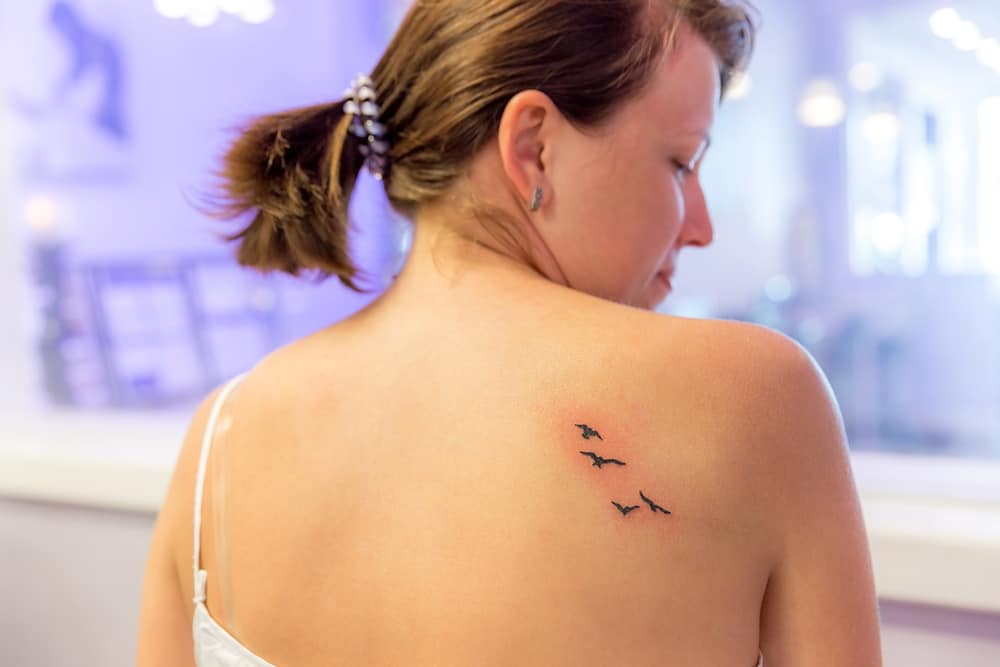
How To Treat Tattoo Bruising
Treating a bruised tattoo is different from the treatment of a regular bruise. This is because a new tattoo is technically an open wound. Because of the risk of infection, you will need to exercise extra caution.
While there’s nothing wrong with leaving a bruise and letting it heal on its own, there are several ways to help the bruising heal faster.
Rest
The more rest your body receives, the faster your tattoo will heal. If you have a tattoo on a frequently used body part, such as your hands, you should take it easy for a while. You should also exercise caution when washing your hands.
Part of resting includes avoiding exercise for the first few days after getting your new tattoo to avoid putting too much strain on your body. Your heart will have to work harder to get the blood pumping around your body by exerting yourself too much. This increase in blood flow can cause more excessive bruising.
Ice The Area
Using ice as a compress, you can limit blood flow to the traumatized area. In turn, this will prevent blood from pooling around the bruise. This is more effective for minor bruises.
An important thing to keep in mind is that the skin around your tattooed region will be extremely sensitive and delicate. You should take care to compress the area lightly and avoid pressing the ice too firmly against your skin.
To prevent bacteria from invading the tattoo while it heals, you should place a barrier cloth between the ice and your skin.
Elevate The Affected Area
More blood pooling in the tattooed area might cause an increase in swelling. By elevating the bruise, you can reduce blood flow to the area, which allows the tattoo to heal more quickly.
It’s necessary to elevate the affected area above the heart. If you have a tattoo on your lower body, you can lie down and raise your lower extremities by putting pillows underneath your buttocks. You can do this while sleeping or resting during the day.
Use Medication
If the bruising is causing pain or bothering you by interfering with your everyday activities, you could try taking some ibuprofen to relieve the pain and swelling.
As the swelling reduces, the bruise around your tattoo will also begin to heal faster.
Stop Or Limit Smoking
Smoking has many negative health impacts, including impairing tissue recovery. Smoking can also reduce blood circulation when it comes to bruising and healing tattoos.
Obviously, this isn’t the best choice for a healing tattoo. So, quit smoking a week before your tattoo and for a couple of weeks afterward. If you find it difficult to quit, you should limit the number of cigarettes you smoke throughout the day.
Knowing The Difference Between Bruising And Tattoo Blowout
A tattoo bruise and blowout may appear similar during the first few days of healing. However, over the course of many days, you’ll see that the bruise fades, and the colors will begin to change.
On the other hand, a tattoo blowout isn’t going away anytime soon. Unless you have it surgically removed, it will remain in your skin indefinitely.
A tattoo blowout occurs when the ink penetrates much deeper than the dermis layer of the skin. While some people only suffer from minor to moderate blowouts, others may experience a more severe blowout.
Tattoo blowout blurs the lines in your tattoo, and the ink used to produce the lines moves beyond their outline. It may look like your tattoo’s ink is seeping outward, making it seem like the ink is smudged beneath the skin.
If you’re experiencing a blowout, there are a few ways to lessen the effects. These include correcting the tattoo with lasering or more tattooing.
Correcting Blowout Using Lasering
The look of a tattoo blowout can be significantly reduced using laser therapy. Q-switched lasers emit energy waves that are absorbed by the skin’s ink particles. The energy diffuses the ink deeper into the skin, making it less visible with each session.
With laser therapy, you should be able to keep the tattoo you want with little to no traces of a tattoo blowout. You can keep your fixed tattoo in good condition by avoiding sun exposure, which can cause it to fade even more.
It may take five or more sessions to diminish the appearance of the blowout or smudging to the point where it is relatively unnoticeable. The number of sessions required is, however, determined by the severity of the blowout as well as your body’s response to laser therapy.
Laser therapy can be more expensive than a tattoo correction session. The price is usually determined by the size, color, and age of the tattoo.
Correcting Blowout With More Tattooing
The most cost-effective technique to correct a tattoo blowout is to cover it up with more tattooing, but you may have to wait up to two months for it to cure before getting a cover-up to hide it.
A good cover-up tattoo can preserve the appearance of your tattoo while reducing the appearance of a blowout.
If the blowout is severe, your cover-up tattoo will need to be bigger and darker than your original ink. It’s possible that the tattoo you get will be very different from the one you hoped for.
Conclusion
Although bruising around your new tattoo can be concerning, it is a common problem that affects a lot of people. If the bruising isn’t too severe, it shouldn’t alter the appearance of the healing process of your tattoo.
In extreme cases, you may be experiencing blowout rather than bruising. While you can minimize the effects of a tattoo blowout, your tattoo may have to be covered up.

